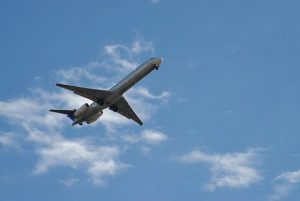 Flight control surfaces are an important part of all airplanes. Airplanes are designed to generate lift in response to air flowing under and over certain areas. While some of these areas are fixed, others are adjustable. These adjustable areas are flight control surfaces. They allow pilots to change the speed or trajectory of an airplane through adjustments performed in the cockpit.
Flight control surfaces are an important part of all airplanes. Airplanes are designed to generate lift in response to air flowing under and over certain areas. While some of these areas are fixed, others are adjustable. These adjustable areas are flight control surfaces. They allow pilots to change the speed or trajectory of an airplane through adjustments performed in the cockpit.
Overview of Flight Control Surfaces
What are flight control surfaces exactly? Also known as a flight control system, a flight control surface is an aerodynamic device that’s used to change an airplane’s speed, trajectory or altitude. Most airplanes have a combination of primary and secondary flight control surfaces. Primary flight control surfaces are the most important, and airplanes rely on them during takeoffs and landings. Secondary flight control surfaces are supplemental devices that assist in the aforementioned flight processes.
Common Types of Flight Control Surfaces
There are several types of flight control surfaces. Ailerons, for instance, are a common type of flight control surface. Ailerons consist of horizontal and rectangular-shaped tabs that are fitted to the back of an airplane’s wings. Most airplanes have a single aileron on the back of each wing. Pilots can raise or lower the ailerons. Normally, when pilots move the control stick to the left, the aileron on the left wing goes up while the aileron on the right wing does down. This alternating positioning will then change the direction of the airplane, essentially turning the airplane to the left.
Another common type of flight control surface is an elevator. Elevators are adjustable parts of the horizontal stabilizer. You can find them affixed to the horizontal tail of an airplane. Unlike with ailerons, elevators operate in sync with each other each. Both of the elevators will move up together, and they’ll move down together.
We can’t talk about flight control surfaces without mentioning rudders. Most airplanes have a single rudder, which is mounted to the back edge of the vertical stabilizer. The rudder is controlled by a pair of pedals inside of the cockpit. When a pilot presses the left pedal, the airplane’s rudder will move to the left. When a pilot presses the right pedal, conversely, the airplane’s rudder will move to the right.
While ailerons, elevators and rudders are the most common types of flight control surfaces, airplanes may include others as well. Alternative flight control surfaces consist of spoilers, flaps, slaps and air brakes. These are all secondary flight control surfaces, however. Ailerons, elevators and rudders are considered primary flight control surfaces.



